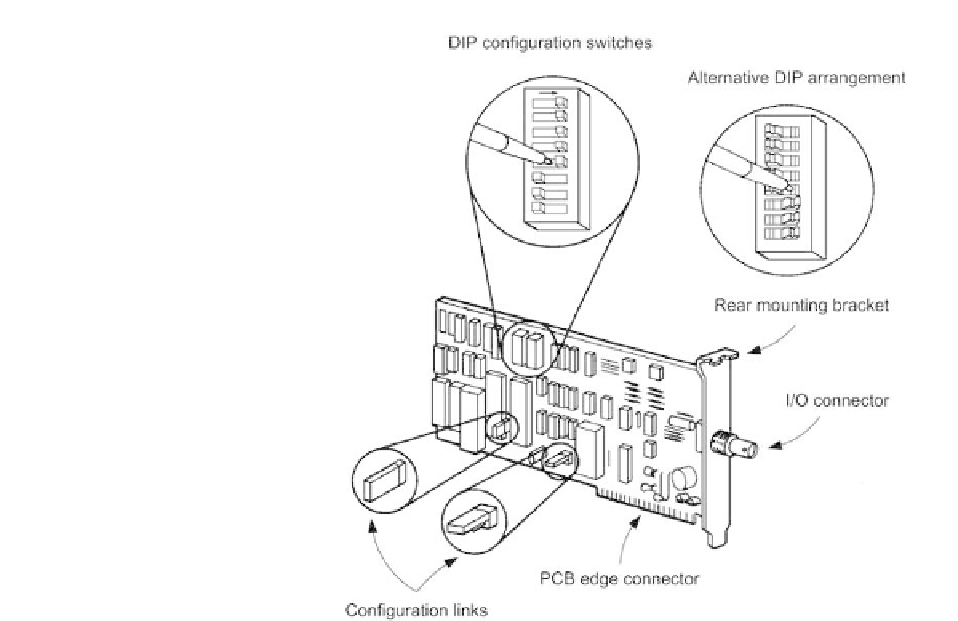Hardware Reference
In-Depth Information
Figure 13.33
Typical bus adapter card showing links and settings
Finally, in a perfect world there would be no uncertainty nor any ambiguity
about the logic levels present in a digital system. Unfortunately, this is seldom
the case since
spurious signals
and
noise
are invariably present to some degree.
The ability to reject noise is thus an important requirement of PC-based control
systems. This is particularly true where a system is to be used in a particularly
noisy environment (such as a shipyard or steelworks). In such a situation, special
precautions may be necessary in order to avoid corruption of signals and data,
and one or more of the following techniques may be applied:
•
Using a 'clean' AC supply for the PC controller and peripheral devices (where
appropriate). If such a supply is not available, a supply filter or AC power
conditioner should be fitted.
•
Screening all signal cables (particularly those used to connect remote trans-
ducers) and returning the outer braid screen to earth (note that noise rejection
is sometimes enhanced if the screen is only earthed at one point).
•
Ensuring that the PC system enclosure is adequately earthed and that none of
the outer panels or metal chassis parts of external card frames or enclosures
are allowed to 'float'.
•
Decoupling supply rails at the point at which they enter each external signal
conditioning board (where appropriate).
•
In extreme cases, making use of optical fibres (and appropriate interface
hardware) rather than twisted pairs or co-axial cables for the asynchronous
transmission of digital signals.

